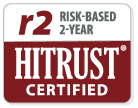This piece originally appeared in The Journal of America’s Physician Groups, Summer 2021. You can find it here.
I recently had the opportunity to speak with Steve Waldren, MD, Chief Medical Informatics Officer for the American Academy of Family Physicians, and Mike Archuleta, Chief Information Officer for Mt. San Rafael Hospital in San Rafael, California, about the state of physician burnout.
As a practicing physician, I am no stranger to burnout.1 I have seen colleagues struggle with an array of mental health issues—only to hide them instead of seeking help, for fear of repercussions.
On the heels of the pandemic, the current state of “don’t ask, don’t tell” with physician mental health is dire. Given the critical nature of this situation and its impact on physicians and the patients they serve, the need for leaders to step up is even more pressing.
As part of my discussion with Steve and Mike, we explored what healthcare leaders can and should prioritize in the year ahead to ensure physicians have the necessary transparency and support to deal with many of the taxing issues leading to burnout—from COVID-19 impacts to longer-term struggles with administrative burdens brought on by things like the electronic health record (EHR) and value-based care. We also discussed ways to avoid exacerbating burnout with poorly configured or implemented technology.
I left the conversation feeling energized because of our shared understanding of the problem at hand, and the realization that this problem can only be solved when C-suite and physician leadership come to the table and chart a path forward together.
To properly address physician burnout in the age of COVID-19, we agreed that there are three specific areas where support is needed in the near term.
1. PRIORITIZE A CARE TEAM APPROACH
First, patient care must be team-oriented. Putting the onus on physicians alone to drive high-quality outcomes and manage all of the administrative duties of patient care is precisely why we have burnout issues today. We simply can’t ask more of physicians.
We agreed that a care team approach with the physician at the center is the appropriate model moving forward. This model ensures physicians have the surround-sound support they need to prioritize patient care, while also offering them resources so that they can better manage necessary changes like transitioning to value-based care and adopting new, emerging models of care like telehealth and remote patient monitoring.
“Addressing burnout head-on is what we all need to stabilize the future of patient care.”
2. IMPROVE TECHNOLOGY AND MAKE IT USER-FRIENDLY
As a clinician, I can tell you the clerical burdens associated with patient care are significant. On top of that, the technology that physicians have been given—electronic health records—was not made for value-based care. Often we are asking providers to do something they were not trained to do, using a tool that was designed for something else.
Together, Steve, Mike, and I discussed some of the emerging technologies that hold promise in reducing clerical burdens today. Technologies like artificial intelligence, machine learning, and voice recognition all hold great promise. But the reality is that many are just not ready for prime time.
More so, these technologies ask more of physicians— more time to learn how to use them and more changes in our current, established workflow. Physicians don’t have the time and energy to deal with this learning curve—especially today with the burdens of COVID-19.
With this in mind, we agreed that there is a need to rethink the EHR as the center of the universe. Clearly, EHRs have been part of the problem of physician burnout instead of the solution. As healthcare leaders plan ahead for changes to the technology stack, it will be important that they, too, rethink the role of the EHR.
Until this technology catches up to what we are used to using in other parts of our lives, healthcare leadership needs to identify new technologies that address and help automate physician burdens like clinical documentation and charting. We will also need new platforms that can help deal with the massive patient data fragmentation we are experiencing today with EHRs.

3. INCENT THE RIGHT CHANGES
While there is some mistrust with the idea of incenting change based on lessons learned from the Centers for Medicare & Medicaid Services’ “Meaningful Use” push, the reality is that change won’t happen in healthcare without some sort of “carrot.” The key for leadership moving forward is to incent the right changes.
When we talk about the right changes, it is helpful to share an example. A solid change to incent is to move away from giving physicians 10 minutes to see a patient—and instead incent and support them to take the time they need to fully address a patient’s health ailments and assess full risk to drive preventive, holistic care.
Another example of a smart change to incent is the transition to value-based care. This transition is challenging for healthcare leadership, as well as for physicians and care teams. With this in mind, a system of rewards for physicians who embrace changes to value-based care—such as new approaches to clinical documentation that fit into current workflows but also align with prospective risk adjustment best practices— can go a long way toward driving the changes needed to embrace value over volume.
Aligning physician compensation models with valuebased care has helped the organizations I have worked with. Why? Changing the way physicians think and practice is not easy. If you want them to embrace yet another change—and one as mission-critical as operationalizing value-based care—you need to tell them what is in it for their patients. Incentives help ensure the right levers are pulled to make this transition a reality, while also offering physicians compensation for any additional work that is needed to put these changes into action.
As physicians, we are still surrounded by antiquated systems and technology. Changing this fact is not something that will happen overnight because these issues are deep-rooted and systemic. Still, with a sharp near-term focus by healthcare and physician leadership on these above three areas, we can make smart change a reality. Bringing joy back to the practice of medicine by addressing burnout head-on is what we all need to stabilize the future of patient care. o
References:
1Healy, Anthony, MD, Lambert, Matt, MD. 2021. “From Hopeless to Hopeful: Helping Physicians Manage Mounting Burdens from the Pandemic.” Healthcare Innovation, April 23, 2021. https://www.hcinnovationgroup.com/covid-19/ article/21219877/from-hopeless-to-hopefulhelping-physicians-manage-mounting-burdensfrom-the-pandemic
2Whyte, John, PhD. 2021. “Mental Health Support for Clinicians: Where’s the Privacy?” Medscape, May 24, 2021. https://www.medscape. com/viewarticle/951558?src=soc_lk_share

